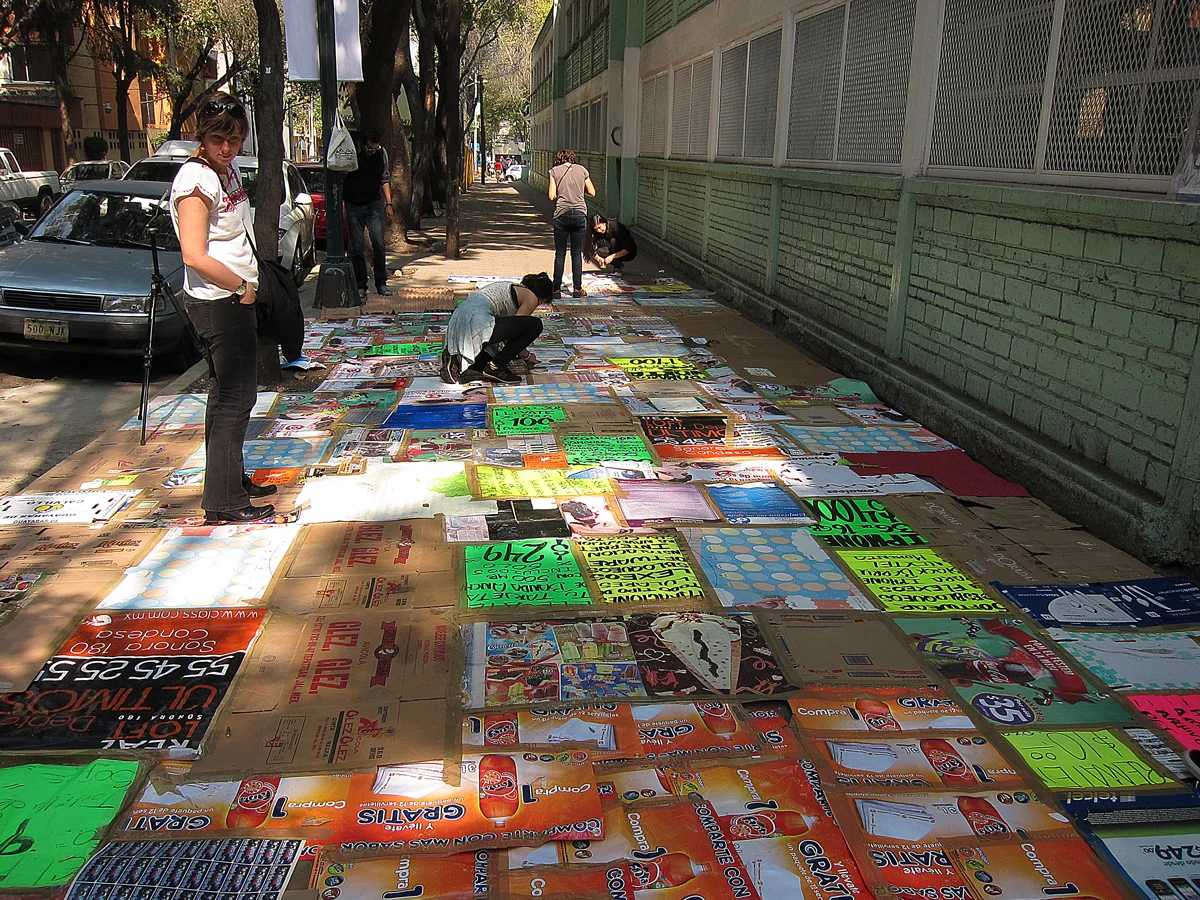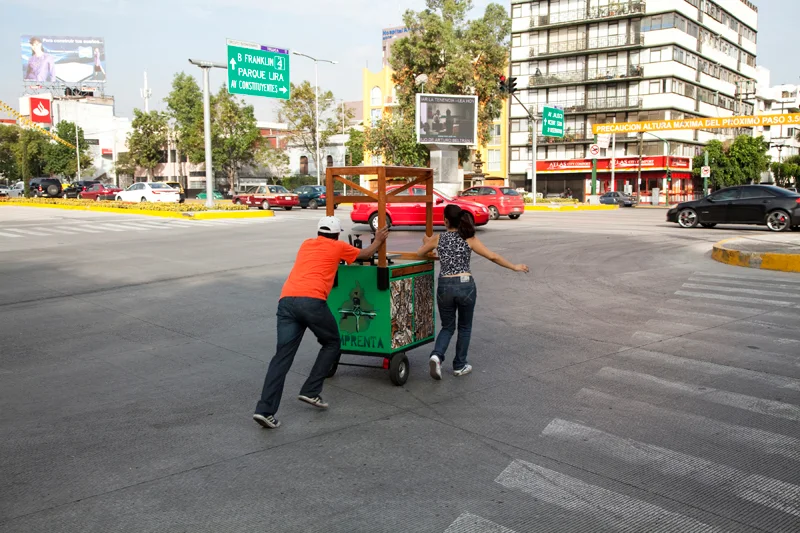Lovers kissing and aggressive street hustling. Cumbia musicians playing late at night. Crowds coursing along pre-Columbian, colonial, and modern streets, with endless food stands. Welcome to Mexico City. For its over 20 million inhabitants, the streets offer infinite frenetic and dream-like situations, where in one day you can see both the beauty of an ancient Aztec ruin and impoverished children selling candy at high-end restaurants. On the same streets, some contemporary artists are offering an alternative to traditional public art. In tune with the everyday, initiatives such as La Galería de Comercio and works such as La imprenta móvil aim to give walking audiences a more immediate experience of art.
In 2009, during Mexico’s war against narcotráfico—a war that has already cost thousands of civilian lives—several artists were inspired. Take Nuria Montiel, a leading voice in the local emerging art scene. Montiel started a mobile printing press—La imprenta móvil (2010-2013)—that could travel across Mexico City as a space for reflection, social action and public collaboration. When people realized what the press could do, they used it to create their own banners for public protest march materials. Montiel would bring paper, but also CD’s and other raw material for printing. One time she even took La imprenta móvil to a march in the countryside. La imprenta móvil became a living record of the different histories emerging in an ongoing episode of unrest.
Once a month in Mexico City, La Galería de Comercio presents a project that promotes public encounters on a corner of Calle Comercio and Calle Martí in the Colonia Escandón. Unlike typical white-cube galleries, La Galería de Comercio embraces the street, with its everyday activities, and produces events that adhere to the streets’ structural and social conditions. Projects are initiated by invitation and are made with low or no budgets and must engage the public in some way. Each project is documented and broadcasted, extending audience beyond physical limitations. The gallery does not profit directly from the projects, thereby challenging conventional notions of gallery space and public works, and proving the potential of an artistic practice outside traditional monetary exchange. Collaborators have included Nuria Montiel, Abraham Cruzvillegas, Jimena Mendoza,
Interested in social engagement, temporality and nomadism, artists in the streets of Mexico City are proposing a socially engaged approach towards art-making, enhancing the scenic qualities of urban space in their city and challenging passing audiences to examine the political conditions, social experience and crude realities of the moment.





